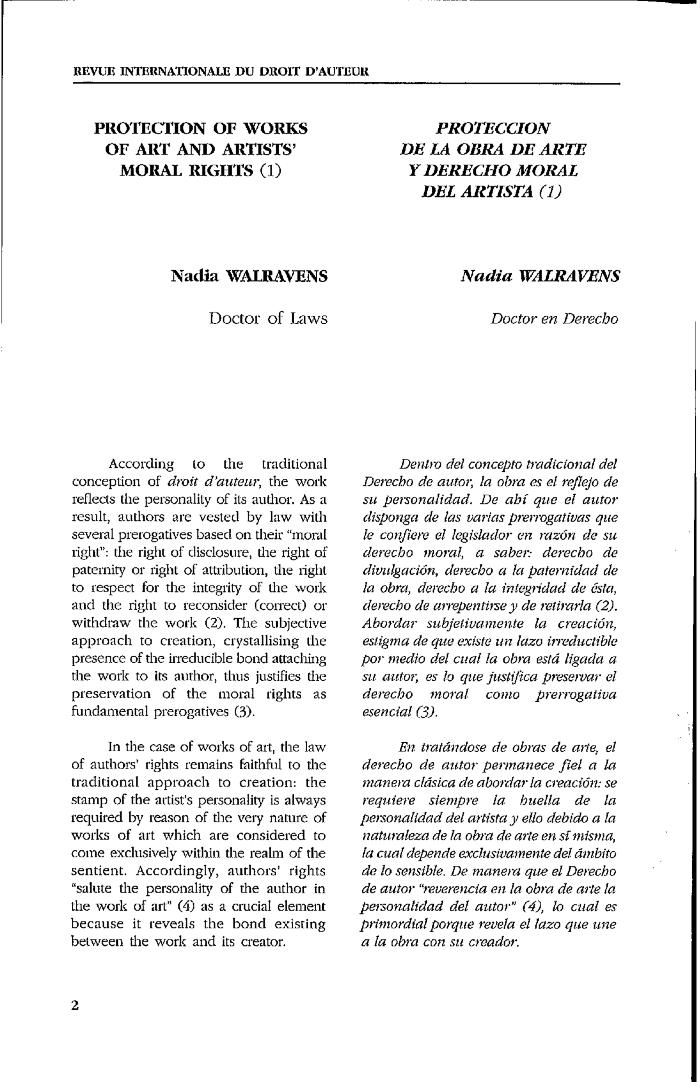
Doctrine
This article is available to RIDA subscribers only.
RIDA 197 | 07-2003
Doctrine

Protection of Works of Art and Artists’ Moral Rights
WALRAVENS, Nadia
197-D1_EN Afficher la version française de cet article.
Afficher la version française de cet article.
 Show the english version
Show the english version
 Mostrar la versión en español
Mostrar la versión en español
Start of the article :
According to the traditional conception of droit d’auteur, the work reflects the personality of its author. As a result, authors are vested by law with several prerogatives based on their “moral right”: the right of disclosure, the right of paternity or attribution, the right to respect for the integrity of the work and the right to reconsider (correct) or withdraw the work. The subjective approach to creation, crystallising the presence of the irreducible bond attaching the work to its author, thus justifies the preservation of the moral rights as fundamental prerogatives. In the case of works of art, the law of authors’ rights remains faithful to the traditional approach to creation: the stamp of the artist’s personality is always required. As far as contemporary art is concerned, although artists often distance themselves today from their works in their relationship with them, the bond attaching them to their creations still exists all the same. Indeed, most of the time, despite this voluntary distancing, the expression of the artist’s stamp continues to be present. Hence the need to preserve the existence of the moral rights, for it is indeed the bond between the work and its creator, reflecting a subjective approach to creation, that justifies the specific nature of the rights granted to the latter. Yet because they are not understood as well as traditional works, works of contemporary art are more fragile and require authors’ rights protection – and particularly moral rights protection – to a greater extent. Only the prerogatives of a moral nature can guarantee artists that their personality as embodied in their works will be respected. Hence the reason why it is important that artists should be able to exercise the moral rights that are enshrined in law.